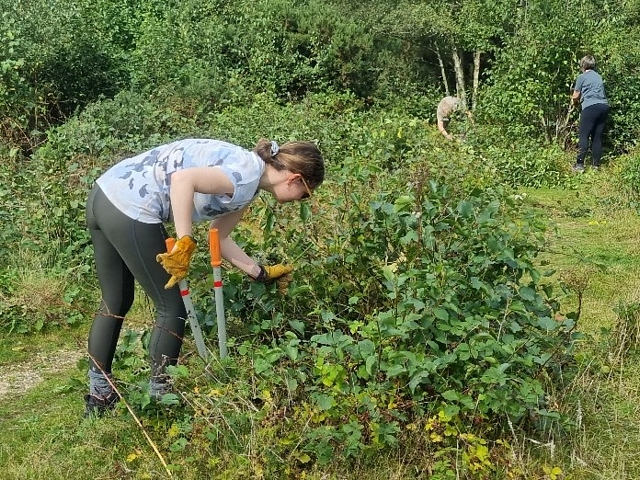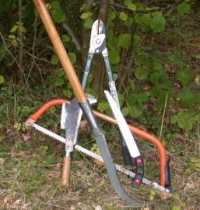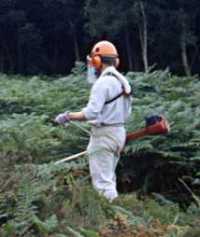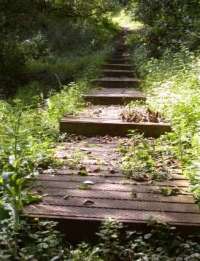Most of our tasks fall into one of the following categories...
Tree and scrub clearance

Heathland is a man-made, but ecologically valuable, habitat. The heaths of southern England were created on areas of soil too poor for crops, and historically were maintained by grazing, burning and collecting fuel wood. As an artificial habitat, open but not cultivated, heathland supports many unusual and specialist species.
With the loss of traditional management, and conversion to other uses, lowland heath is now scarce and declining (down to about 16% of its nineteenth-century extent). It is a priority habitat under the UK Biodiversity Action Plan. Without management, heathland is invaded by scrub, and (although it may host more species in total) widespread generalist species benefit while heathland specialists decline.

We clear invasive (mainly birch and gorse) and non-native (mainly sycamore, holm oak and Italian alder) trees and scrub to prevent the common turning into a wood. We also carry out hazel coppicing in the woods surrounding the central heathland plateau, to preserve a woodland management tradition and to enhance dormouse habitat.
Most of this work is done with hand tools (bowsaws, pruning saws, shears and loppers) but properly trained members and BBOWT staff also use chainsaws and brushcutters. Where appropriate, we treat the stumps with herbicide to prevent re-growth. Logs are stacked into habitat piles for amphibians, reptiles and insects, and we usually have a bonfire for the smaller brash.
Clearing other unwanted plants

Globally, invasive introduced species are the second greatest threat (after habitat destruction) to biodiversity. We attempt to control ragwort (poisonous to grazing livestock) and bracken (tends to overshade and outcompete heather). That's a never-ending battle, but we also hope (and are on course) to completely eradicate Himalayan balsam from the commons. We have also cleared most of the rhododendron, although it was never such a widespread problem here as it is on many heathland sites.
One of the most obvious invasive alien species now on the commons is the Crassula helmsii which forms a thick carpet around many of the ponds. Unfortunately, there's not much we can do about it.
Construction and crafts

Not all the tasks are about ripping stuff out - sometimes we put stuff in! We have made, installed or otherwise done...
- Footpath surfacing and edging boards
- Waymark posts and other signage
- Bridge-building
- Dragon's teeth to prevent vehicles getting onto the common
- Boardwalks and steps
- A bat hibernaculum (converted from one of the old airbase buildings)
- Bird and bat boxes
- Besom brooms (using traditional techniques, and materials sourced from the commons)
- Hedge laying
- Fence and gate repairs
- Filling potholes in the gravel car parks
Miscellaneous tasks
- Vegetation clearance alongside footpaths to keep them passable
- Tree planting (for example we've planted trees and shrubs around the main car park, and to block out lighting from a hospital which adjoins part of the site)
- Pond clearance
- Collecting broom seed to raise locally-sourced plants for screening
- Nightjar surveys
- Removing old fencing materials and other seriously big rubbish left over from airbase days
- Scraping off bracken litter to expose the soil and encourage dormant heather seeds to germinate
- Spreading heather clippings to encourage seeding into bare ground